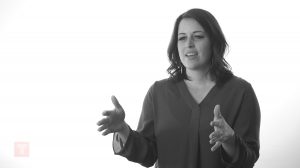Do You Feel in Control? Sexual Desire, Sexual Passion Expression, and Associations with Perceived Compulsivity to Pornography and Pornography Use Frequency
AUTHOR(S)
PUBLISHED
2021 in Sexuality Research and Social Policy
KEY FINDINGS
- This study found that while sexual drive was associated with higher pornography use, both obsessive and inhibited sexual passion were connected to higher perceived compulsivity.
ABSTRACT
Previous scholars have found that when individuals feel that pornography use is uncontrollable, it is linked to more extreme negative outcomes than frequency of use. With a Mechanical Turk sample of 1421 individuals, we used structural equation modeling to evaluate how multiple aspects of sexual desire (sexual drive and dyadic desire) and multiple aspects of sexual passion expression (harmonious, obsessive, and inhibited) were associated with both pornography use frequency and perceived compulsivity to pornography. In general,... READ FULL ABSTRACT
EXCERPTS
- "In this study, we explored how sexual desire and sexual passion expression may differ in their associations between pornography use frequency and perceived compulsion to pornography. We hypothesized that sexual desire would be more important for use frequency while sexual passion expression would be more important for perceived compulsivity. Our main hypothesis was generally supported, as the sexual desire variables were more strongly associated with pornography use and the sexual passion variables were more strongly associated with perceived compulsivity."
- "Sexual drive was the variable most strongly associated with pornography use when all variables were evaluated simultaneously, whereas dyadic sexual desire was not associated with pornography use. It seems that sexual drive reflects a natural interest in sexuality, which may be manifest in non-compulsive engagement with pornography. Because individuals are more likely to search out forms of media with which they identify, our results suggest that individuals who have a higher sexual drive are more likely to search out pornography... One possible reason that dyadic sexual desire was not associated with pornography use in the full structural model is that someone feeling high sexual desire for his or her partner may be more likely to pursue sexual activity with the partner rather than search out pornography. Additionally, when simultaneously evaluating dyadic sexual desire and sexual drive, sexual drive might be described as sexual interest directed toward sources other than the partner."



